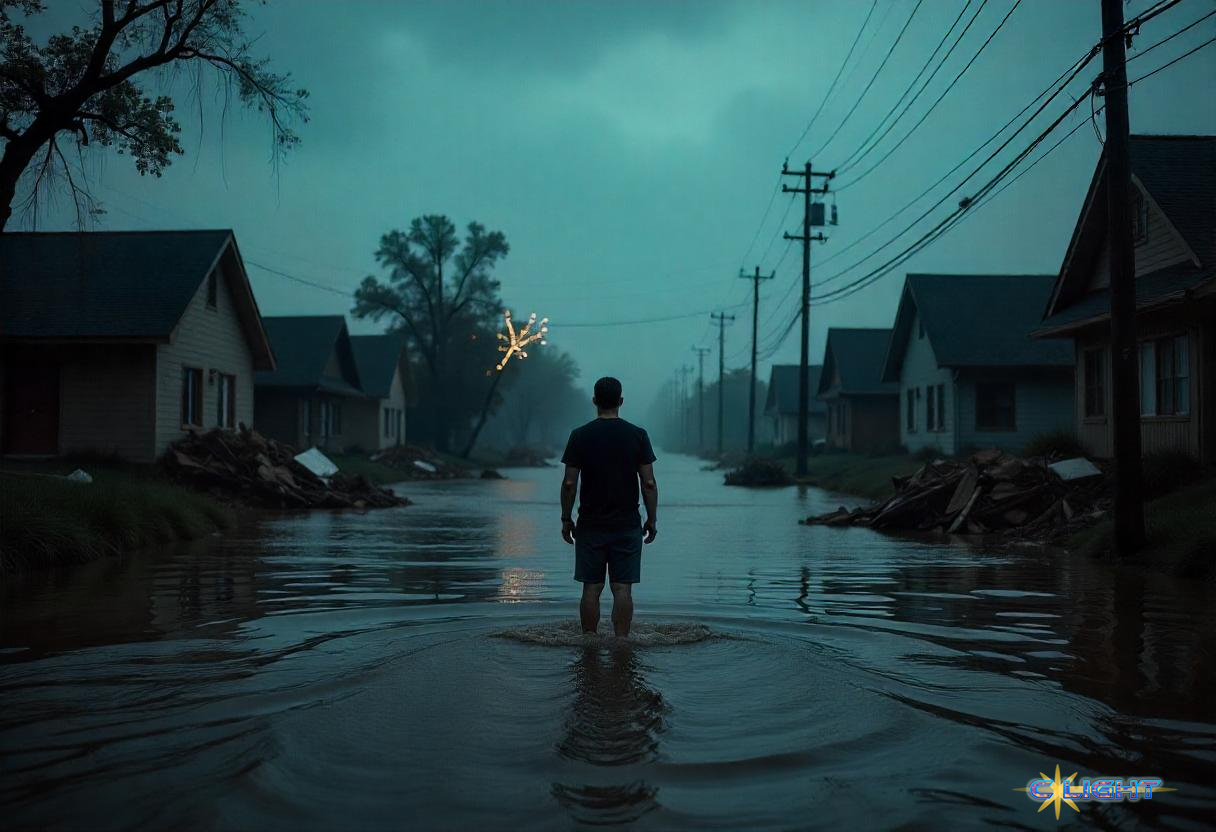A sobering new scorecard for humanity has just been released, and its findings suggest that the comfortable narratives of inevitable global progress are, at best, an illusion for vast swaths of the world’s population and, at worst, a dangerous misreading of our collective trajectory. The United Nations Development Programme’s latest Human Development Index (HDI) report, covering data from 2023 and released in early May 2025, reveals a world still reeling from recent shocks and now facing what appears to be the slowest pace of overall human development improvement since the index began in 1990. This isn’t just a story about distant lands; it’s a critical wake-up call that forces a hard look at vulnerabilities even within seemingly prosperous nations, including our own, and underscores how converging crises—from climate change to policy choices that erode societal resilience—are making the path forward far more precarious than many might believe.
The HDI, a composite measure of life expectancy, education, and income, famously saw its global score decline for the first time ever in 2020 and 2021 due to the COVID-19 pandemic. While a partial rebound occurred in 2022, the latest data for 2023 indicates that this recovery has not only stalled for many but that the overall engine of human progress is sputtering.
The Global Picture: A Fractured Recovery, A Widening Divide, and an Accelerating Climate Crisis
The most alarming trend highlighted by the new HDI report is the starkly uneven nature of the post-pandemic world. While 97% of rich countries have reportedly seen their HDI scores recover to or exceed pre-pandemic levels, fewer than 60% of poor countries can say the same. This has led to a grim milestone: after decades during which the development gap between the world’s richest and poorest nations was gradually narrowing, that chasm has now widened for four consecutive years. Regions like the Arab world and Latin America & the Caribbean are reported to be experiencing the slowest overall recovery in living standards.
Underlying these statistics is the relentless and accelerating pressure of climate change. The UN and countless scientific bodies have long identified climate change as a primary threat to human development. More frequent and intense extreme weather events—devastating storms, prolonged droughts, deadly heatwaves, and rising sea levels—disproportionately hammer vulnerable nations. These events directly erode all pillars of the HDI: they shorten life expectancies through direct fatalities and the spread of disease; they destroy schools and displace communities, shattering educational attainment for millions; and they decimate livelihoods in agriculture and other climate-sensitive sectors, crippling income potential. The latest reports from the World Meteorological Organization in 2024 and early 2025 only confirm this grim trajectory, with record temperatures and accelerating climate impacts becoming the “new normal.”
The UNDP itself, in its 2020 report, even experimented with a “Planetary Pressures-Adjusted HDI” (PHDI), which factored in a country’s carbon footprint and material consumption. When viewed through this lens, many nations with “very high human development,” including the United States (which plummeted 45 places in that adjusted ranking), were shown to have achieved their status at an unsustainable environmental cost, further challenging the notion of what true “progress” means.

Cracks in the Facade: The U.S. – Not Immune and Facing New Perils
The idea that “we’re not doing as well as we think” isn’t just a global observation; it has pointed relevance even for a wealthy nation like the United States, which ranked 17th in the unadjusted HDI. As The Economist noted, the HDI doesn’t capture internal inequalities. A startling April 2025 Brown University study found that the richest 1% of Americans experience mortality rates comparable to the poorest individuals in Northern and Western European countries, and even most Eastern Europeans—a stark reminder that national wealth does not automatically translate into equitable well-being for all citizens.
This sense of underlying fragility is brought into even sharper, more tragic focus by current events and policy choices that appear to be actively weakening America’s own resilience. Even as we analyze global development data from two years ago, the systems designed to protect American lives and well-being today are under immense, and in some cases, deliberately inflicted strain.
This very weekend, a devastating series of tornadoes has ripped across the U.S. Midwest and South, claiming at least 27 lives in Kentucky, Missouri, and Virginia, with Kentucky bearing the brunt of the tragedy. Hundreds of homes have been damaged or destroyed, and communities are reeling. For Kentucky, this is but the latest in a horrifying string of deadly weather events, from catastrophic tornadoes in late 2021 to historic floods in the summer of 2022 and another round of deadly storms just two months ago.
While the immediate focus is on rescue and recovery, a deeply disturbing context shadows these events. As an Associated Press report highlighted, these storms have struck after the Trump administration “massively cut staffing of National Weather Service [NWS] offices.” According to NWS employee data obtained by the AP, as of March 2025, the NWS office in Jackson, Kentucky, responsible for the hard-hit Laurel County area—had a staggering 25% vacancy rate. The Louisville, Kentucky, office was down 29% and lacked a permanent meteorologist-in-charge. The St. Louis office, which also saw fatalities, had a 16% vacancy rate. Experts cited by the AP consider any NWS office vacancy rate above 20% a “critical problem” for effective forecasting and warning dissemination.
For some, like residents in central Indiana, the terror of this weekend’s storms was compounded by a chilling silence: tornado sirens that should have blared a warning as funnel clouds were spotted nearby reportedly remained dormant. While the precise reasons for individual siren failures require investigation, such experiences on the ground underscore the potentially lethal consequences when public safety infrastructure—our first line of defense—is under-resourced, understaffed, or otherwise compromised.
This isn’t an abstract concern; it’s about the fundamental ability of the state to protect its citizens. The weather, fueled by a changing climate, isn’t going to magically improve. What must improve is our preparedness and our response. Yet, recent policy directions suggest a dangerous dismantling of that very capacity, making the HDI’s picture of slowed global progress look even more frightening when we consider our own nation’s increasing vulnerability.
The Plight of the Poorest (Global): Climate and Cuts Compound Misery
If a nation as wealthy as the United States is facing such challenges to its internal resilience, the situation for the world’s poorest countries, those at the bottom of the HDI (predominantly in Sub-Saharan Africa, like South Sudan), is exponentially more dire. These nations are already grappling with extreme poverty (levels of which have barely fallen since 2015), declining public health measures post-COVID, and slower economic growth. Climate change hits them hardest and most frequently, and they have the fewest resources to adapt or recover.
Compounding this tragedy are the policy choices of wealthier nations. As The Economist explicitly noted, cuts to international aid budgets by governments in America and Europe will make things worse for poor countries. We have seen in recent reports how drastic cuts to USAID funding under the current U.S. administration are leading to the termination of life-saving food and health programs, potentially resulting in hundreds of thousands of preventable child deaths globally. Food aid, already purchased with U.S. taxpayer money and sourced from American farmers, is reportedly at risk of spoiling in warehouses due to bureaucratic inertia and the chaotic dismantling of aid infrastructure.
The Long Road Ahead: A Diminished Outlook in a More Dangerous World
The confluence of these factors—the enduring impact of the pandemic, the accelerating climate crisis, geopolitical instability, and a retreat from international development aid by some wealthy nations—has led the UN and other analysts to a sobering conclusion: the pre-2020 optimism that the world could achieve “very high levels of human development” by 2030 is now a distant dream. If current sluggish trends persist, that milestone could be decades further away. This isn’t just a delayed timeline; it represents generations of lost potential and continued suffering.

Beyond Illusions – A Call for Resilience, Responsibility, and Real Investment
The latest Human Development Index report, when read alongside the unfolding realities of climate change and the impact of current policy decisions both domestically and internationally, is a profound call for a global and national reality check. True human development, true progress, cannot be measured solely by headline GDP figures or the recovery of the wealthiest. It must be gauged by our collective ability to ensure the health, education, and decent standard of living for all, especially the most vulnerable, and by our commitment to building resilient societies capable of weathering the inevitable storms—both literal and metaphorical.
This requires an honest acknowledgment that “we are not doing as well as we think.” It demands that we confront the devastating impacts of climate change with serious, sustained action. It necessitates robust investment in, not the dismantling of, critical public safety infrastructure like our National Weather Service and emergency response systems. And it calls for a renewed commitment to international cooperation and development aid, recognizing that the well-being of the poorest among us ultimately affects the stability and prosperity of all.
The alternative is to continue down a path where progress unravels, inequalities deepen, and the human cost of inaction—measured in lives lost to preventable disasters, hunger, and disease—becomes an increasingly unbearable burden on our collective conscience. The time for illusions is over; the time for responsible, courageous action is now.
Discover more from Clight Morning Analysis
Subscribe to get the latest posts sent to your email.










